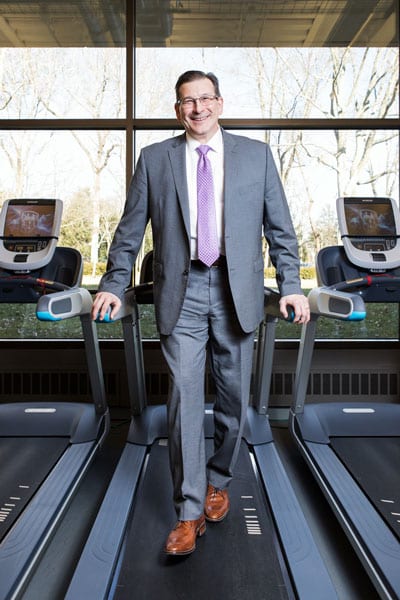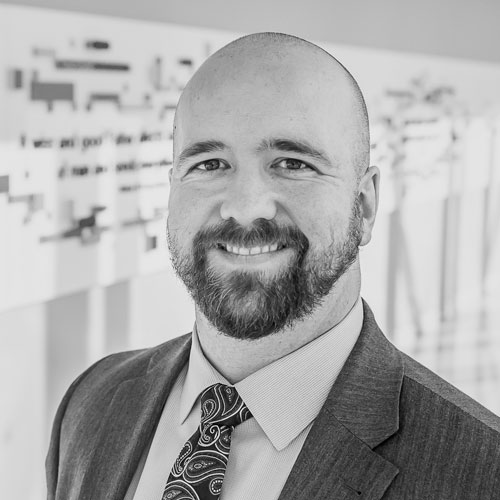In an iconic I Love Lucy episode, Lucy and Ethel go to work at a chocolate factory. After getting kicked out of several departments, they are placed on an assembly line where they are responsible for wrapping chocolates before they go to the packing room.
At first, everything is going well. But as the conveyor belt speeds up, Lucy and Ethel struggle to keep up the pace. So they start shoveling candy into their mouths to make sure no chocolates get past them.
Erik A. Sossa, vice president, global benefits and wellness at PepsiCo, Inc., thinks about this scene when he approaches his role at the multinational food, snack, and beverage corporation.

“I believe the challenge we face with employee engagement is meeting people where they are: at the right time, in the right place, and in the right way, rather than overwhelming them with information all at once and in the same form,” Sossa says.
His goal is to engage each of PepsiCo’s employees so they see the opportunities and benefits of the company’s wellness programs that have relevance for them, that can help them stay healthy, or assist them in their time of need, before they have undergone ineffective or unnecessary treatments.
“For many companies, 5 percent or less of their population drive about 40–60 percent of their healthcare spend,” Sossa says. “While it is essential to focus on those folks who are driving most of the spend, it is equally important to help the other 95 percent stay healthy, so that our programs are sustainable.”
Sossa’s role encompasses three aspects. First, he acts as a center of expertise for the organization, with Sossa and his team leading the global strategy for all benefits and wellness programs.
The second is ensuring that the health and wellness strategy supports Performance with Purpose, PepsiCo’s fundamental belief that the company’s success is inextricably linked to the sustainability of the world around us. PepsiCo’s Performance with Purpose goals focus on improving the products it sells, operating responsibly to protect the planet, and empowering people around the world.
Lastly, he and his team are responsible for making sure programs benefit employees and are executed in a cost-effective and efficient way for the company. This challenge is one Sossa takes quite seriously. To help keep employees happy and healthy, PepsiCo has crafted a holistic wellness strategy that goes far beyond the traditional interpretation of employee wellness. In addition to improving employees’ physical health, PepsiCo’s programs focus on mental, emotional, social, and financial well-being. These resources are available as part of the company’s Healthy Living program.
“Erik Sossa has expanded the scope of PepsiCo’s employee health initiative to address elements of wellness that are traditionally overlooked,” the team at health insurance provider Anthem said in a statement. “This whole-person approach, combined with the ‘Health ACE’ advocacy solution developed in partnership with Anthem, has driven engagement and achieved the kind of results any company would be thrilled to see.”
To engage employees physically, the company has implemented a variety of programs meant to foster friendly competition and get employees up and moving. One program—Ready, Step, Move, Give!—encourages employees to be more physically active. Using a team competition format as well as enabling individual participation, it measures employees’ physical activity by converting it into an equivalent number of steps. The number of steps taken is then translated into a dollar amount, which the PepsiCo Foundation donates to charity to benefit communities where PepsiCo does business.
In addition to a focus on physical well-being, Sossa has also worked to provide PepsiCo employees with an abundance of mental health services. For example, PepsiCo employees have access to an online resilience coaching platform that gives individuals tips and tools to manage stress more effectively. Sossa is also working on training managers so they are better equipped to identify when one of their team members is stressed, either in their personal or professional life, and to give them tools to help them cope.
Sossa has also helped develop wellness programs to address one of the most important, yet often overlooked areas: financial health.
Nearly one-third of employees reported that financial stress was a distraction at work in 2017, according to PricewaterhouseCoopers’ 2017 Employee Financial Wellness Survey. Additionally, 46 percent of respondents said they spend at least three hours at work thinking about personal financial matters.
Addressing this issue, Sossa’s team has created PepsiCo’s Healthy Money initiative, curating several resources employees can use to assess their financial health and develop strategies to improve it.
The company offers a variety of webinars and on-site workshops dedicated to issues such as preparing for retirement, refinancing debt, and debt management, among others. PepsiCo employees may also speak with a financial advisor through a third-party vendor to discuss any financial matters that are causing distress.
Having all of these resources available for employees is a great start, but Sossa says his main focus now is making sure the right employees are engaging with the right programs at the right time.
“That’s the million dollar question I believe every employer is looking at,” Sossa says. “I haven’t met a benefits leader who has felt like they’ve completely cracked the code of employee engagement, but we always strive to lead in this area.”
To improve employee engagement in health and wellness programs, Sossa has partnered with a third-party service that helps analyze employee health and wellness data. The third-party service puts together medical data, prescription drug information, wellness screening data, and wellness questionnaire data to create a holistic picture of each employee’s current state of well-
being and needs, and then identifies which of PepsiCo’s benefits programs may be of most value to them.
Through this third party, employees are sent targeted messages to inform them about certain health and wellness programs that might be useful at a particular time, depending on their current medical activity. These targeted messages are helping to improve employee engagement in Pepsi’s healthcare programs, Sossa says.
The company has also tried to improve employee engagement through its Health ACE team, which stands for: assist, connect, and educate. It’s another way to spread awareness about the multitude of health and wellness resources available to employees and their families.
“What we’re trying to do is give employees one place to go and to bring the resources directly relevant to them,” Sossa says. “This team spends most time on the highest-acuity cases, but it is designed to help employees whatever their needs are. It aims to communicate all of the programs available to individuals, whether they are employees or family members, dealing with health conditions.”
While there is still work to be done to increase employee engagement in wellness programs, Sossa is proud of the impact he’s already seen. One story in particular stands out for him.
In the early days of PepsiCo’s Healthy Living program, a local television program covered one of the company’s wellness events in New Jersey. When the reporter asked one employee about the Healthy Living Program, the employee ripped off his belt and pointed to some of the worn, original belt notches and said, “This was me before Healthy Living.” He then pointed to three new holes further in on his belt and said, “This is me now.”
“That visual showed me how someone had embraced the program and valued it,” Sossa says. “It is such a great story because it reminds us how we can have a positive impact on the lives of our employees and their families.”
Photos by Sheila Barabad

